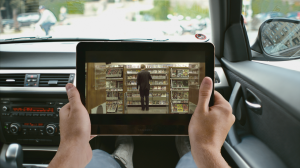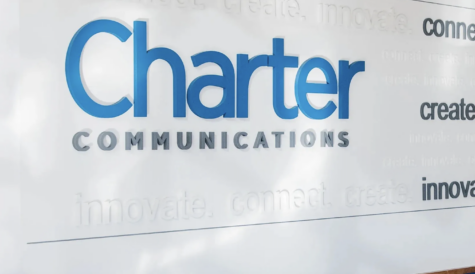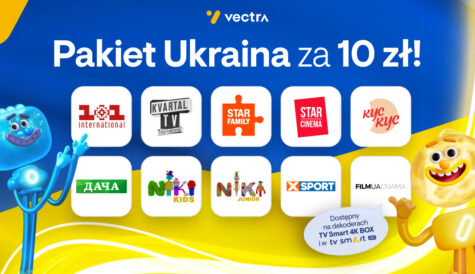Virtual realities: IP video and multiscreen content consumption
Cost, complexity and speed of change in the multiscreen world is leading service providers to restructure their internal processes and demand more flexible and economic ways to process video than investing in bespoke hardware. Stuart Thomson reports.
To paraphrase a famous (mis)quotation of Mark Twain, reports of the death of broadcast video have been greatly exaggerated. A couple of months ago Thinkbox produced a study suggesting that only 1.5% of UK TV viewing is currently on screens other than the good old traditional TV, and that linear TV viewing remains broadly as strong as ever.
According to Thinkbox’s February report, the average Briton watched three hours and 52 minutes a day of linear TV on a TV set in 2013, down slightly on the previous year in the absence of major sporting events. By contrast, the average viewer spent only three and a half minutes a day watching TV on tablets, smartphones and laptops.
The UK is a highly advanced TV market with a high rate of adoption of new IP-based devices, so if the viewing on tablets is still marginal there, it is likely to be even more so elsewhere. Such reports provide a useful corrective to the view that the iPad and similar devices have changed everything.
Headend virtualisation
However, even if the pace of migration away from traditional linear viewing is sometimes exaggerated, there can be little doubt about the ultimate direction of travel. While Thinkbox’s report may or may not accurately reflect the present-day pattern of video consumption, it is also true that a major change in consumer behaviour often progresses slowly to start with and then reaches a point where the pace of change accelerates dramatically. Broadcasters and TV service providers therefore know they will ultimately have to reorder their delivery infrastructure to cope with mass-scale delivery of TV everywhere services. Having taken the decision to support the delivery of TV to tablets, smartphones and other devices, typically operators initially acquired technology to ‘bolt on’ such services to their existing headend infrastructures.
They are now beginning to think again. The requirement to support a multiplicity of delivery options will take its toll, and ultimately could throw the economics of pay TV – and it is generally pay TV operators that are leading the charge – into question.
The challenge of supporting multiple video formats and a mix of live and on-demand content is considerable. The cost of installing hardware to deliver all the likely variations required at scale is enormous, so as video delivery evolves to meet the needs of the multiscreen world, operators are increasingly looking to other solutions.
It is in this context that concepts such as cloud-based infrastructure and headend ‘virtualisation’ are gaining ground, raising the possibility that video processing capabilities, for example, could be provided on-demand as demand for services grows.
A number of announcements at the recent NAB Show highlighted the direction of travel. Video specialist Harmonic announced it was shifting its long-term strategy away from hardware to software-based video processing. The company unveiled VOS, which is designed to enable virtualised video processing from a single software platform and encompasses aspects of video workflow including ingest, playout, graphics, branding, packaging and delivery as well as compression.
At a press event in Las Vegas to mark the launch, Harmonic product management senior vice-president Krish Padmanabhan said that Harmonic’s customers are increasingly looking to move to a more IT-centric and virtualised environment where, for example, operators can maximise the value of what’s available to them by performing encoding for live services with resources that are then dedicated to file-based encoding overnight.
Despite embracing what CEO Patrick Harshman described as a “major change” for the company, Harmonic’s senior director of emerging technology and strategy, Ian Trow, says that the complexity of broadcasters’ and service providers’ requirements means that the change is likely to take time and is likely to see the emergence of software-based encoding as a service.
“We have to help them with that change, but it is a challenging time for customers,” says Trow. “They want to have virtualised, flexible platforms and all that, but the level of understanding you need to take on that kind of change is vast.”
Transcoding, says Trow, is a particularly complex area. “The demands of transcoding have come to the point where you need transcoding as a service,” he says. While Harmonic supplies its own Carbon Coder platform it has also teamed up with Encoding.com to deliver transcoding as a service. This, he says, will be the first of many partnerships that Harmonic will strike to enable it to offer a complete solution while concentrating on its core strengths.
“The fundamental things are that HD distribution costs are killing broadcasters and getting broadcast penetration in a streaming world is costly,” says Trow. The use of software-based transcoding on high-density blade-servers is helping transform the economics of delivering multisreen video by providing the flexibility to deliver in new formats without a massive upfront investment, he says: “Previously you needed dedicated hardware for new standards but now these platforms are within the reach of the latest blade-servers.”
Software is also helping transform industry workflows more generally, and this could help operators make money from multiscreen – a goal that has eluded most to date. “For the pay TV industry the workflows have remained pretty static for a long time,” says Trow. “What is happening now is that the effort towards virtualisation is simplifying those workflows. What we see is that a lot of steps will be rationalised, and you will see operators’ entry into targeted advertising [for example] being made much easier. Pulling away from spot advertising towards targeted advertising has been very difficult in the traditional broadcast space, but with a virtual platform [it is] much simpler to do targeted advertising and bring new value into the broadcast chain.”
IP for all
Rival video processing provider Ericsson meanwhile used the NAB Show to expand on its earlier launch of Ericsson Virtualised Encoding (EVE), an umbrella platform unveiled at London’s TV Connect event.
Ericsson used the show to highlight its Media Vision 2020 view of where video is moving over the next five years by outlining six “key observations”. The first of these is that there will likely be 15 billion video-enabled devices at large in the world by 2020. Second, content and services will increasingly be bundled together to monetise multiscreen distribution more effectively.
The third of Ericsson’s observations is that there will be a requirement for IP video delivery to all devices. In the case of traditional broadcast platform, one-way RF delivery will be complemented by IP connectivity.
Other observations include that 50% of content consumption will be on-demand and/or time-shifted, that there will be a raft of powerful new entrants to the TV aggregator space and that market revenues overall will grow from US$530 billion (€380 billion) today to about US$750 billion in 2020.
According to Simon Frost, head of media marketing at Ericsson, pay TV operators remain the best-positioned industry players to benefit from the shifts taking place that Ericsson has identified in its document.
“There is still a huge opportunity for the pay TV aggregator and new opportunities are being opened up by IP,” says Frost, arguing that consumers still want to be guided through the media landscape by an operator they trust. Pay TV operators will increasingly be the aggregator of much more than old-fashioned linear TV channels, however, with mobile access to content and non-linear delivery across multiple devices bundled in.
“The evolution of the pay TV platform is also about making every network video-centric and opening up new revenue opportunities for network owners once quality assurance measures are in place,” he says.
Technologies developed by Ericsson including its LTE Broadcast solution and HEVC-enabled video compression platforms can help, says Frost.
Mobile delivery will play a key role in video distribution in the future, he adds. Frost argues that mobile broadband subscriptions are set to grow exponentially over the next few years and that a number of use cases for LTE delivery of live video can be envisaged, even where there is pervasive WiFi coverage. He points to the example of live concerts in large venues where fans could use their handheld devices to get a better view of the band. Another example cited by Frost is the case of motorsports fans at a NASCAR event who could summon multiple single-driver viewpoints on their smartphones while watching the race. Other applications for LTE Broadcast could include digital signage or providing a complement for DTT in certain areas.
Frost says that Ericsson believes video processing will use a mix of software and hardware depending on the service provider or broadcaster’s requirements.
Compression choices
At the NAB Show, Ericsson announced that software-based compression specialist Elemental would be the first third-party integration partner for EVE.
“We have invested a huge amount of time in programmable software platforms that we designed from scratch just to do video,” says Frost. “The virtualised encoding layer [of EVE] is about removing the complexity for customers to deploy different technologies at different states in their evolution. Traditional platforms are hardware-based while TV everywhere platforms are based on software or GPU-accelerated platforms.”
GPU-accelerated platforms offer a combination of CPU-based processing and the offloading of computer-intensive processing to the graphics-processing unit. However, says Frost, hardware-based encoding will still be required for high-end applications.
“Some of our traditional competitors have jumped on software wholeheartedly but we are still getting traction and performance out of our hardware platform,” he says. If operators can take advantage of high-end processing power to squeeze more channels on a satellite transponder, “those systems will pay for themselves very quickly”, he says.
Keith Wymbs, vice-president of marketing at Elemental, meanwhile says that telecom operators rather that cable providers and other broadcasters are more likely to adopt software-based processing because they are already immersed in IT culture. “Telcos are more IT-centric because it’s all about IP. They are used to running data centres,” he says. “Cable takes a more broadcast-focused approach, but it depends on the operator.”
For Wymbs, the shift to software-based processing is a key turning point in the development of one of the key technologies that underpins the video distribution business.
“The move towards software is a huge strategic shift for the industry. Really challenging apps can [now] be done in software, whereas in the past, to do really high-quality H.264-based HD meant you waited for an ASIC,” or Application Specific Integrated Circuit, he says. Now the power of CPUs means that a much greater proportion of the strain can be taken by software-based processing technology, even though software remains less efficient than hardware in terms of density – the number of units required to process a given amount of video.
“The underlying cost of all the infrastructure will be less than waiting around for ASICs to become available,” argues Wymbs, who points out that software liberates video operators from the need for upfront investment and grants them much greater flexibility to experiment with services that can then be shut down if they don’t work.
“You can get to market sooner and do speculative trials because you can buy a licence and then repurpose [your resources] for something else if it doesn’t work out,” says Wymbs. “In the past a new service could mean a career bet but now you have the flexibility.”
The development of video processing in the form of software-as-a-service will enable operators to take advantage of a pooling of resources that can easily be repurposed as requirements change – for example if MPEG-DASH emerges as the key adaptive bit-rate technology, he says.
Resource allocation
Wymbs is more cautious about the prospect of operators completely outsourcing their video processing requirements to a third-party data centre provider. “Some of them do outsource completely but the integration within the software stack that does video processing is really challenging,” he says.
In the meantime, however, IP-based operators now have the flexibility to allocate resources flexibly depending on the needs of the moment and the rise and fall of demand for specific formats without making huge upfront investments.
Envivio is another video processing specialist that has, from the beginning, taken a software-based approach to both file-based and live encoding. “Our software runs on virtual machines in the cloud,” says Cyrille Berson, director, product management at Envivio. “We can reduce operational costs and people can deploy very easily on virtual machines.”
Envivio recently integrated its Envivio Muse encoders and Envivio Halo network media processors into the OpenStack cloud software and teamed up with US-based OTT streaming platform provider 1 Mainstream to deliver a turnkey end-to-end cloud-based video service. The pair have said they have already partnered to provide cloud video services for a top-tier operator in Europe to deliver live OTT channels to TV screens.
“They provide TV as a service in the cloud – if you have content you can send it to them and they will not only transcode it for you but also create applications to run it on Android devices and iPhones,” says Berson. “They are using our software to do the transcoding.”
According to Berson, moving video processing to the cloud enables operators to benefit from reduced capital and operational expenditure. It also enables them to avoid the burden of training engineers and allows them to achieve scale without making large upfront investments.
The degree of virtualisation will ultimately depend on the specific needs of the operator. Envivio also provides software encoding on dedicated appliances for high-end applications. Berson points out that the technology provider is delivering its encoding platform on the Ivy Bridge chipset, the latest version of Intel’s microprocessor that supports HEVC-based live 4Kp60 video.
The reality is therefore that a mix of technologies will continue to be used for some time. This is in part because technical teams within broadcast organsiations may naturally be expected to take a conservative approach, because of the extent of existing investments in hardware, and also because the pace of change in viewing habits has thus far not required a wholesale shift away from one-to-many broadcast towards IP-all-the-way unicast delivery.
But the overall direction of change towards software and virtualisation is clear.




